Public Records
A Military Records Search Strategy for Your Family Tree
November 11, 2011 by ramona
Filed under Articles, Genealogy Military Records, Genealogy Records 101, Public Records
 Having an ancestor who served in the military is a source of pride for many families and justly so, making military genealogy a popular avenue of research. Who would not want to delve into the details of their forebear’s military service in order to honor these family heroes? Finding the details of their service however, can be a challenging prospect, especially when it comes to more recent records. To make matters more confusing, the sheer number of online databases can be overwhelming to the genealogy beginner; making it difficult to know where to begin.
Having an ancestor who served in the military is a source of pride for many families and justly so, making military genealogy a popular avenue of research. Who would not want to delve into the details of their forebear’s military service in order to honor these family heroes? Finding the details of their service however, can be a challenging prospect, especially when it comes to more recent records. To make matters more confusing, the sheer number of online databases can be overwhelming to the genealogy beginner; making it difficult to know where to begin.
Having a good step by step strategy for your research will undoubtedly help uncover your predecessors courageous past.
The first step: start with what you know
Your search for military documents is no different than any other type of genealogy research, in that, the first step of any ancestor hunt is starting with what you know. Do you or another family member have any military memorabilia such as discharge papers, medals, photographs, weapons or even uniforms? If so, that is clearly the place to start. Any and all of these things can provide valuable information to help set you on your way to recovering more records needed to put new buds on your family tree.
The second step: focus on your target
Decide on your target. What do you want to find first. This may include educating yourself on the many types of military records available. It is important to know what records you are looking for, before you can start searching for them. Also, note that records may differ for the time frame you are searching, be it the war of 1812, the Civil War or World War II. In addition, the branch of military your family member served in Army, Navy or Coastguard etc, will have some bearing on your search strategy. For instance during the second world record types include:
- World War 2 Personnel Files
- World War 2 Military Unit and Ship Records
- Merchant Marine Records
- Army Enlistment Records
- Draft Records
- World War 2 POW Records
- World War 2 Casualties
- Cadet Nurse Corps
- Internment and Relocation Records
- Civilian Participation at Home
The most important of these records for the beginning genealogist is the record of discharge or “Report of Separation” which is kept in the personnel files. A Report of Separation is generally a one page document that contains all of the information concerning your ancestor’s service such as rank, dates of service, service number, unit, battles and campaigns as well as any decorations and awards received.
Step three: identify your resources
Online
Online genealogy sites are fast becoming the main resource for genealogists researching military records. With the advent of digitized records they are available from both subscription sites as well as archival collections held by government agencies. Whether you choose to use a paid resource, which is quite often more convenient and often gives faster results due to their searchable databases, or conduct a manual search of archived records, may depend on the time and money you have to spend. One of the more prominent online sites for military genealogy is Fold3.com. Formerly Footnote.com, Fold3 is owned by the same company as ancestry.com. The company has decided to use Fold3 exclusively as a site for searching military records.
Government archives are your best pick if you are working within a budget from your home computer and have the time to conduct a manual search. It is important to note that not all government archives have available records online; the availability of records can vary with the country you are searching. As a last word and this can be important to your genealogy budget, before you pay for a subscription, check with your local library. Many libraries (both local and university libraries) have free in-library access to ancestry.com.
Hard Copy
Hard copy records are a resource that should never be overlooked. Searching for hard copy records requires a little footwork but can present a huge pay-off; the main source for these record types includes state and provincial archives. It also pays to check with historical and genealogical societies as they frequently have military record collections. One last resource that bears mentioning is newspaper archives held by most libraries on microfilm. Local newspapers are rich with family history information as they often contain stories of departing and arriving local soldiers, in addition you may also find mentions of a soldier’s letter home.
Final Step: analyze your findings
Once you have collected the records you have set out to find, analyze them closely as they may lead you to your next search target. For example, a copy of your great grandfather WWII discharge papers will tell you of any awards or honors he received. This may lead to questions about why, when and how he received them. If a Purple Heart Medal is listed, this tells you he was wounded or killed in service, a Silver Star indicates valor in the face of the enemy. This certainly enriches your family history in addition to helping you understand what kind of person he was.
A good genealogy community can be a great boon in helping to sort out what you need to know in order to make a strong start. If you need some help in this area, join us on the Discovery Panel forums for further discussions on military records
Free Genealogy Search: 1940 US Census Returns Go Live April 12, 2012
October 12, 2011 by ramona
Filed under Articles, Latest News, Public Records
 A visit to the National Archives genealogy resources page evokes a subtle sense of excitement, as the counter ticks down to the April 2, 2012 release of the 1940 US census returns. These important records will be accessible through public access computers at Nara facilities on a national level. They can also be conveniently accessed through the internet from your personal computer. Better yet, it is free of charge. The 1940 census is the 16th Federal Population Census of the United States and the census day was April 1.
A visit to the National Archives genealogy resources page evokes a subtle sense of excitement, as the counter ticks down to the April 2, 2012 release of the 1940 US census returns. These important records will be accessible through public access computers at Nara facilities on a national level. They can also be conveniently accessed through the internet from your personal computer. Better yet, it is free of charge. The 1940 census is the 16th Federal Population Census of the United States and the census day was April 1.
The questionnaire for this census was a double-sided form that afforded space for 40 entries. There were also two additional lines for the five percent sample questions.
New questions added
Many of the questions answered on the 1940 returns are customary to census questionnaires. However there are several new questions added that are likely to provide clues of great value to your genealogy research. For instance, the 1940 census asks for the name of the person providing the information as well as the birthplace of that person’s mother and father.
Some other interesting questions asked on the 1940 census include:
• Whether the home of the enumerator is owned or rented, as well as the value of the home
• Whether there are any persons currently absent from the household
• Highest completed level of education
• It asks for a specific profession such as salesman, music teacher or laborer etc
• Whether the person is a veteran of the US military or the wife, widow or child of a veteran
• The earliest language spoken at home during childhood
Of a woman’s marital status it asks for the number of times a woman has been married, her age at the time of her first marriage and the total number of children born to her. (Excluding stillbirths)
Research strategies
For those of you who are already eagerly anticipating your research of the 1940 returns. Here are a few strategies to help you get the most out of your investigation. At the top of this list is the knowledge that you will not be able to conduct searches by name, as there will be no name index available when it first opens up. To locate your ancestor, you are going to need their address as well as the enumeration district in which it was located. It may be a good idea to start gathering some of this data now.
In order to find the addresses of the forebear(s) you will be researching. You can start looking them up in city directories. These directories are usually available in your local library, so initiate your inquiry there. If you have already found your predecessors in the 1930 census, use it as a starting point for your 1940 census searches. Another excellent resource for tracking down locations is the WWII draft records.Should you still be having trouble locating the enumeration districts you need? Try the 1940 enumeration district, census maps, as they should contain the district numbers.
It is important to note, that maps may not be available for all towns; in this case, looking at county maps is the next step.
Links to enumeration district finding aids:
• Geographic Descriptions of Census Enumeration Districts
• Enumeration District Maps
• 1940 City Directories at NARA
• Use Stephen P. Morse’s Search engines to locate Census Enumeration District Numbers
This information should get you off to a great start. However, should you want a little more assistance there is a very informative guide available at the NARA Website. Before you leave, grab the table for deciphering the codes used in the 1940 census. Print it out and keep it with your preparation materials for an organized search later. This will give you plenty to do while waiting for April 2, 2012 to arrive.
For more information on this and other great genealogy resources visit: National Archives and Records Administration.
Family Search Adds Millions of New Records in September of 2011
September 30, 2011 by ramona
Filed under Articles, Latest News, Public Records
On September 7, 2011, Family Search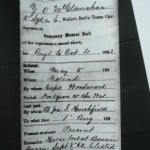 once again enriched the genealogy community by adding millions of new records to its database. Included in the new additions are records from the US, Canada, Mexico, England and South Africa. Let us take a little closer look at this new genealogical treasure trove. The majority of the US records focus on Union and Confederate soldiers who served in the American Civil War and include records from Alabama, Arkansas, California, Delaware, Florida, Georgia, Kentucky, Louisiana, Maryland, Mississippi and Missouri.
once again enriched the genealogy community by adding millions of new records to its database. Included in the new additions are records from the US, Canada, Mexico, England and South Africa. Let us take a little closer look at this new genealogical treasure trove. The majority of the US records focus on Union and Confederate soldiers who served in the American Civil War and include records from Alabama, Arkansas, California, Delaware, Florida, Georgia, Kentucky, Louisiana, Maryland, Mississippi and Missouri.
In addition to the Civil War Records, you will also find.
Applications for headstones for military veterans, 1925-1941
This collection contains images of the applications of the Cemetarial Division of the Quartermaster General. Most of these records are for Civil war veterans although a few do cover earlier wars.
Index of passenger arrivals in the gulf ports, 1820-1874
In this set of records, you will find a card index for passengers that arrived in 70 ports along the Atlantic and Gulf Coasts. Sadly, there are none included from New York.
Records of national homes for US disabled volunteer soldiers, 1866-1938
This collection contains a wealth of historical registers for veterans admitted to 12 regional homes. Information in these records include (but are not limited to) Company, regiment, marital status, birthplace, date and cause of death.
Records of confederate prisoners of war, 1861-1865
An incredible 427 images of volumes are contained in this record set from the War Departments office of the Commissary General and the Surgeon Generals office.
Index to the Pension Application Files, for the War of 1812, 1812-1910
A collection containing the soldier’s name, military service information and widow’s name.
Canadian notorial records
Notarial records, distinct to Quebec Canada; are a record of private agreement taken by a notary and are a legal and binding contract. Notary records include marriage contracts, leases, inventories and wills.
Quebec notarial records, 1800-1900
In this collection you will find the records arranged by geographic location, notary and time period.
England miscellaneous records
A collection of records from the Northumberland Archives Service. This miscellaneous assembly includes Parish Registers, Electoral Registers and Nonconformist records.
Mexico
Mexico, Guanajuato, Catholic Church Records, 1576-1984. Marriages and Baptisms from the Catholic Parishes in the state of Guanajuato, Mexico are kept in this collection.
Mexico, México Estado, Civil Registration, 1861-1941. An assortment of Civil registrations, (births, marriages and deaths), from the state of México Edo, Mexico.
South Africa
South Africa, Dutch Reformed Church Registers, 1660-1970. You will find an index and images of marriages and baptisms along with records of membership in the Dutch Reformed Catholic Church. This collection covers the locations, Namibia, Cape of Good Hope province and Transvaal province
The records contained in all collections are being published in full, as images become available.
For more on these new record additions visit Family Search.org
US Social Security Office for Genealogy
January 26, 2010 by Chris
Filed under Articles, Genealogy Civil Records, Genealogy Records 101, Public Records
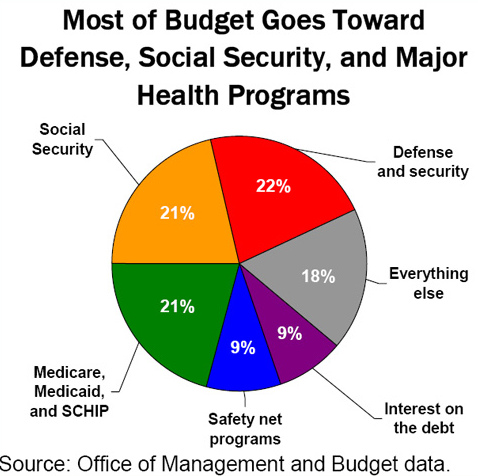 Did you know that any United States citizen living in the US on or after 1936 is required by law to have obtained a Social Security Card. A Social Security Card is obtained by filing a Social Security Application. Social Security Applications are a part of the public record. The Social Security Application requires the applicant to state their mother’s and father’s full name. Very helpful to someone researching their family tree. To get access to these public records, you need to visit the Social Security Administration or a site that allows you to search their records.
Did you know that any United States citizen living in the US on or after 1936 is required by law to have obtained a Social Security Card. A Social Security Card is obtained by filing a Social Security Application. Social Security Applications are a part of the public record. The Social Security Application requires the applicant to state their mother’s and father’s full name. Very helpful to someone researching their family tree. To get access to these public records, you need to visit the Social Security Administration or a site that allows you to search their records.
You can search the records of the US Social Security Office from a number of sources. One popular source is at RootsWeb (which you can visit at the link below).
Wondering How To Make A Family Tree – It Boils Down To Just Three Core Documents Your Searching For!
January 8, 2010 by Chris
Filed under Articles, Getting Started in Genealogy, Introduction to Genealogy, Lesson 4 Articles, Public Records
I receiv e great feedback every day by email. I wish more people would use the comments form below to share their experience. Please don’t hesitate to do so yourself. Regardless, keep the questions coming. I wanted to write right away and respond to everyone with the answer to a great question I received. One beginner genealogist wrote, “All this about government resources and talking to your family is great but it’s still not clear what I’m looking for.”
e great feedback every day by email. I wish more people would use the comments form below to share their experience. Please don’t hesitate to do so yourself. Regardless, keep the questions coming. I wanted to write right away and respond to everyone with the answer to a great question I received. One beginner genealogist wrote, “All this about government resources and talking to your family is great but it’s still not clear what I’m looking for.”
Has this same question crossed your mind?
Here’s the bottom line. You want to trace your ancestors back as far as you can. By that I mean identifying your direct ancestors (your parents, your grandparents, your great-great grandparents, etc.). Brothers and sisters, Aunts and Uncles, they are all great people to keep notes on but your core family tree is just the parents of the parents of the parents of you (and beyond).
When you find a direct mother or father in your lineage, you need to have documentation that proves that they are a part of your lineage You do this with formal documentation. Namely, birth certificates, marriage certificates, and death certificates. You’re ultimately searching for these three documents for every person on your family tree. This is how you do a family tree.
These documents will provide you with the critical information you need to go back to the previous generation. For example, a birth certificate will tell you who the parents were.
Does that help? Stick with it… you’re doing great. Just take it one generation at a time.
How To Do A Family Tree – 4 Critical Public Resources
December 9, 2009 by Chris
Filed under Articles, Getting Started in Genealogy, Introduction to Genealogy, Lesson 2 Articles, Public Records
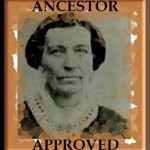 I thought it would be helpful to review the public resources available to you when trying to figure out how to do a family tree. We cover each of these in detail in The Genealogy Guide so I won’t go overboard here. Sometimes knowing the list of resources available is half the battle.
I thought it would be helpful to review the public resources available to you when trying to figure out how to do a family tree. We cover each of these in detail in The Genealogy Guide so I won’t go overboard here. Sometimes knowing the list of resources available is half the battle.
How To Do A Family Tree – Four Must Know Resources
- First of all, you need to know that much of the Social Security database can be accessed as a part of public record in the United States. This is a great place to start
- Other Government resources include the Office for Vital Records and the Department of Veteran Affairs
- Don’t overlook your local courthouse or other public records like those kept by the Knights of Columbus
- Finally, local records from the main ports of call in the US are a great source for immigration records
This is just the basics. What do you think? Am I missing a fundamental public resource? Use the comments area below to add your favorite basic public source for genealogy record hunting.
Top 25 most popular 2009 genealogy blogs
May 11, 2009 by Chris
Filed under Articles, Latest News, Public Records
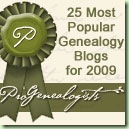 ProGenealogists recently announced their “25 Most Popular Genealogy Blogs for 2009” awards. We are very honored to be part of this group. A glance through the other blogs on the list is truly humbling. It’s even more humbling to read ProGenealogists announcement, noting that “a Google search for genealogy blogs currently results in nearly half a million options, with over seven times that number for ‘family history’ blogs.” I’m not certain how to do a Google search that returns the number of blogs, but to search blog posts, try http://blogsearch.google.com .
ProGenealogists recently announced their “25 Most Popular Genealogy Blogs for 2009” awards. We are very honored to be part of this group. A glance through the other blogs on the list is truly humbling. It’s even more humbling to read ProGenealogists announcement, noting that “a Google search for genealogy blogs currently results in nearly half a million options, with over seven times that number for ‘family history’ blogs.” I’m not certain how to do a Google search that returns the number of blogs, but to search blog posts, try http://blogsearch.google.com .
At the time I wrote this article a search for the word genealogy returned 857,000+ blog posts containing the word genealogy. A search for “family history” (including the quotes), returns 674,000+ posts.
Subscribe to new Google Search results
The search results page contains one of my secrets for uncovering news stories that you won’t see on the other genealogy news sites. You can subscribe to the results of your blog search by clicking one of the options in the left margin under the heading, “Subscribe.” This will give you an email or news feed of all the new results for your search. That’s only 6,600+ articles you’ll have to read each day to cover all blog posts with either the phrase “family history” or the word “genealogy.” Better yet, let your favorite genealogy news blogs shift through all those posts while you use the email option, called a Google Alert, to set up a Internet-wide sweep for new information on those ancestors you’re trying to find!
And thank goodness the President’s choice for new First Pet is done. Several months ago Google changed their search algorithm. My Google alert for FamilySearch started returning results containing “…First Family searches for dog…” To prevent this behavior, include quotes around words you don’t want Google to break into separate words. But I digress…
Measurement Challenges
Choosing the 25 most popular genealogy blogs had special challenges not encountered when measuring the 50 most popular genealogy websites.
“Many people read blog entries through RSS feeds and other means and seldom actually visit the blog’s website,” according to Kory Meyerink, noted genealogist and vice president at ProGenealogist. Instead of website traffic, ProGenealogist turned to Technorati rankings. Even this alternative proved problematic, as Technorati doesn’t include Dick Eastman’s popular online blog/newsletters. This led ProGenealogist to include other factors:
Hundreds of genealogy blogs were evaluated based on their overall content, Technorati rating, and industry experience. Due to the ever-changing nature of the blogosphere and the authority basis of Technorati rankings, it is anticipated that this list will change frequently.
When I first started blogging years ago (has it really been that long?) I found my Technorati authority rating changed so erratically, I couldn’t stand to follow it. Since I seem to be in widget-mode of late, here’s a widget that displays my authority rating in real time:
View Ancestry Insider authority
Like other widgets I’ve posted lately, it is likely you won’t be able to see it (adjacent to “View Ancestry Insider authority”) if you read this article in your email or news reader. View this article online (click here) to see the widget.
The Technorati Authority of a blog is a count of the number of other blogs that have posted links to it during the previous six months. Since other winners of the most popular blogs award have increased my authority by posting the list of winners, I’m honored to return the favor. They are:
- About.com Genealogy (Kimberly Powell)
- Eastman Online Newsletter* (Dick Eastman)
- Genea-Musings (Randy Seaver)
- Creative Gene (Jasia)
- DearMYRTLE (Pat Richely)
- AnceStories (Miriam Midkiff)
- Genealogue (Chris Dunham)
- footnoteMaven (Anonymous)
- Genetic Genealogist (Blaine Bettinger)
- Tracing The Tribe: Jewish Genealogy Blog (Schelly Talalay Dardashti)
- GenaBlogie (Craig Manson)
- Olive Tree Genealogy Blog (Lorine McGinnis Schulze)
- Steve’s Genealogy Blog (Stephen J. Danko)
- Ancestry.com (Juliana Smith)
- TransylvanianDutch (John Newmark)
- GenDisasters (Stu Beitler)
- Genealogy Insider @ FamilyTree (Diane Haddad)
- Think Genealogy (Mark Tucker)
- California Genealogical Society and Library Blog (California Genealogical Society)
- The Genealogy Guys (George G. Morgan and Drew Smith)
- CanadaGenealogy, or, ‘Jane’s Your Aunt’ (Diane Rogers)
- Ancestry Insider (Anonymous)
- GenealogyBlog (Leland Meitzler)
- Ancestor Search Blog (Kathi)
- Genealoge (Hugh Watkins) /its a tie!/
Legacy News (Legacy Tree Software) /its a tie!/
(This posting is from The Ancestry Insider. Click the link to view the full article from its original source.)
1911 Census for England now completely online
April 11, 2009 by Chris
Filed under Articles, Latest News, Public Records
In the ev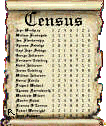 er changing world of online genealogy you have to keep an eye peeled for the latest BIG NEWS! Today’s top story: The 1911 census for England has finally been uploaded. Any one who has been looking for their Scottish ancestors down south will be thrilled to know that the England’s 1911 census is now available through FindmyPast.com at www.1911census.co.uk
er changing world of online genealogy you have to keep an eye peeled for the latest BIG NEWS! Today’s top story: The 1911 census for England has finally been uploaded. Any one who has been looking for their Scottish ancestors down south will be thrilled to know that the England’s 1911 census is now available through FindmyPast.com at www.1911census.co.uk
The next 1911 censuses in line for release are for:
- The Isle of Man
- All Welsh counties
- The Channel Islands
- Royal Naval ships at sea and overseas military establishments.
There is however a wait ahead for the Ireland 1911 census to be released, as it is a bit behind schedule. No word has been heard to explain the holdup from www.census.nationalarchives.ie. We will keep checking with Chris from Scotland’s Greatest Story as he promises to keep us informed and let us know as soon as he hears anything.
Ancestral Trails
January 23, 2009 by Chris
Filed under Articles, Latest News, Public Records

…
Where to Next?
Blank Family Tree with Step-by-Step Instructions
…
How to Make a Family Tree – The NARA
December 29, 2008 by Chris
Filed under Articles, Getting Started in Genealogy, Introduction to Genealogy, Public Records
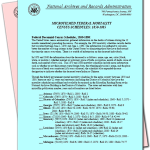
Below is a great article about how to make a family tree through the eyes of a first time visitor to the NARA. In it the author discusses the value of the color guides used to assist researchers with the NARA’s most common records. Make sure you visit the link below to visit the source of the guides online. These resources will surely help you figure out how to make a family tree.
I recently made my first visit to the National Archives and Record Administration (NARA). This is one in a series of articles inspired by that visit to help you make your first visit to the National Archives.
Colored sheet finding aids
National Archives staff have prepared over 160 pages of finding guides to assist researchers with their most common records. These guides are printed on various hues of colored paper. They can be found on a rack in the lobby once you arrive at the Archives.
Not 100% sure the purpose behind the color. These might have been a way to help them stand out or perhaps a coding system. If I learn more I’ll update this post.
While the National Archives has decided not to put these guides online, fortunately, the Mount Vernon Genealogical Society has decided to fill this void. The Mount Vernon Genealogical Society is located in the Washington, DC suburbs where society members are lucky enough to make frequent visits to the National Archives. Some members work there.
Harold McClendon, publicity chair for the society, says,
To make these sheets available to everyone, the Mount Vernon Genealogical Society is placing all of the guides on its web site in PDF format. The guides are organized into the following categories: African Americans, Asian Americans, Census, Citizenship, Civilian Federal Employees, District of Columbia, Early Congressional Private Claims, Immigration, lands, Military, Native American and 1885 State and Territorial Censuses. As new sheets are issued by the National Archives, copies are being added to the web site.
To access these finding aids, go to http://mvgenealogy.org/NARA_Guides.html. McClendon recommends printing the guides related to your research.
As you review the guide, you will then be better able to determine the specific publication to review in search of the desired records. You might even find that the National Archives has publications that you never knew existed.
Thank you, Harold McClendon and the Mount Vernon Genealogical Society for extending this service to the genealogical community.
(This posting is from The Ancestry Insider.)
Great information thanks to the folks at The Ancestry Insider. Use the link above to visit the original post directly and browse their site overall. When trying to figure out how to make a family tree every little bit of information helps.
…
Where to Next?
Blank Family Tree with Step-by-Step Instructions
…
